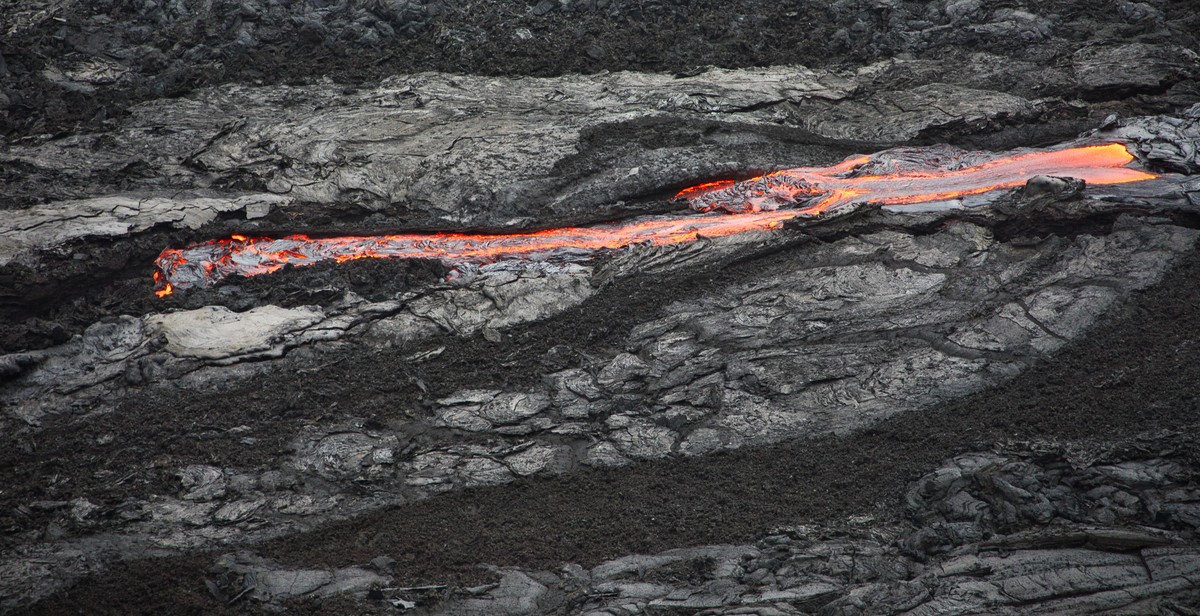How to Protect Your Home from Lava Flows: Designing and Implementing Lava Flow Mitigation Strategies
Living in areas with active volcanoes can be both thrilling and dangerous. The thrill of being close to nature’s raw power is often accompanied by the fear of volcanic eruptions and their associated hazards, such as lava flows. Lava flows can cause significant damage to homes and properties, and even put lives at risk.
Designing and implementing lava flow mitigation strategies is crucial for homeowners living in areas prone to volcanic activity. These strategies can help reduce the impact of lava flows and protect homes from damage.
The Threat of Lava Flows
Lava flows are one of the most destructive hazards associated with volcanic eruptions. They can move at speeds of up to 20 miles per hour and reach temperatures of over 2,000°F. When lava flows come into contact with homes and other structures, they can cause fires, explosions, and structural damage.
While it’s impossible to completely prevent lava flows from reaching homes, there are several mitigation strategies that homeowners can employ to minimize the damage caused by lava flows.

Understanding Lava Flow Mitigation Strategies
Living near a volcano can be both exciting and dangerous. While volcanic eruptions can be awe-inspiring, they can also pose a significant threat to nearby communities. One of the most significant hazards associated with volcanic activity is lava flows. Lava flows can destroy homes, businesses, and infrastructure, leaving communities devastated.
Fortunately, there are various lava flow mitigation strategies that can help protect homes and other structures from damage. These mitigation strategies can range from simple measures like landscaping to more complex engineering solutions. Here are some types of lava flow mitigation strategies:
Types of Lava Flow Mitigation Strategies
- Landscaping: Landscaping can be an effective and affordable way to mitigate the impact of lava flows. By planting trees, shrubs, and other vegetation around homes and buildings, the vegetation can act as a barrier that can slow the flow of lava and protect structures.
- Structural barriers: Structural barriers are designed to block the flow of lava and redirect it away from homes and buildings. These barriers can be made of various materials, including concrete, steel, and earthworks.
- Water barriers: Water barriers are designed to cool and solidify the lava flow by spraying water on it. This method can be effective in slowing down the flow of lava and preventing it from reaching homes and buildings.
- Lava diversion: Lava diversion involves redirecting the flow of lava away from homes and buildings through channels or trenches. This method can be effective, but it requires careful planning and engineering to ensure that the diverted lava does not cause damage elsewhere.
Factors to Consider When Choosing Lava Flow Mitigation Strategies
Choosing the right lava flow mitigation strategy for your home or community requires careful consideration of several factors:
- Location: The location of your home or community in relation to the volcano and the potential flow path of lava is a critical factor to consider.
- Topography: The topography of the area can affect the behavior of lava flows. Steep slopes can cause lava to flow faster, while flat terrain can slow it down.
- Cost: The cost of implementing different mitigation strategies can vary significantly. Some methods, like landscaping, can be relatively inexpensive, while others, like structural barriers, can be costly.
- Effectiveness: The effectiveness of different mitigation strategies can also vary. Some methods may be more effective than others depending on the specific situation.
Overall, choosing the right lava flow mitigation strategy requires careful evaluation of the risks and potential benefits. By working with experts in the field, homeowners and communities can design and implement effective mitigation strategies that can help protect them from the devastating effects of lava flows.

Designing Lava Flow Mitigation Strategies for Your Home
After assessing your home’s vulnerability to lava flows, it’s time to create a plan for lava flow mitigation. This involves designing and implementing effective strategies to protect your home from the destructive force of lava flows. Here are some key strategies to consider:
1. Create a Defensible Space
Creating a defensible space around your home is one of the most important steps in protecting it from lava flows. This involves clearing vegetation and other combustible materials from the area around your home to create a buffer zone that can help slow or stop the progress of lava flows. Ideally, this buffer zone should be at least 30 feet wide, although wider is better.
2. Design Your Landscape with Lava Flows in Mind
When designing your landscape, it’s important to consider the potential impact of lava flows. Avoid planting trees or other vegetation that could easily catch fire or create obstacles for flowing lava. Instead, choose plants that are less flammable and can help slow the progress of lava, such as cactus or succulents.
3. Build with Fire-Resistant Materials
Choosing fire-resistant materials for your home can help reduce the risk of damage or destruction from lava flows. Some good options include metal roofing, concrete walls, and fire-resistant siding. Avoid materials like wood or vinyl, which are highly combustible and can easily catch fire.
4. Install Protective Barriers
Installing protective barriers around your home can also be an effective way to mitigate the impact of lava flows. This can include barriers made from concrete, steel, or other fire-resistant materials that can help divert or slow the flow of lava away from your home.
5. Consider Evacuation Plans
Despite your best efforts, there may be situations where evacuation is necessary to protect your family and property. It’s important to have a well-planned evacuation strategy in place, including identifying safe evacuation routes and having emergency supplies and equipment on hand.
6. Seek Professional Assistance
Designing and implementing effective lava flow mitigation strategies requires expertise and experience. Consider consulting with a professional in the field who can help assess your home’s vulnerability and recommend the best strategies for protecting it from lava flows.
By taking these steps and designing effective lava flow mitigation strategies, you can help protect your home and family from the destructive force of lava flows.

Implementing Lava Flow Mitigation Strategies
Living near active volcanoes can be both thrilling and dangerous. One of the most destructive phenomena associated with volcanoes is lava flows. The unstoppable force of molten rock can destroy everything in its path, including homes and buildings. However, there are mitigation strategies that you can implement to protect your home from lava flows.
Building Barriers to Divert Lava Flows
Building barriers is one of the most effective ways to divert lava flows away from your home. The barriers can be made of different materials, such as concrete, steel, or natural materials like rocks and boulders. The key is to make the barriers high and wide enough to contain the lava flow. It is also important to make sure that the barriers are properly anchored to the ground to prevent the lava from flowing underneath them.
Another effective barrier is a trench. A trench can be dug around your home to divert lava flows away from your property. The trench should be deep enough to prevent the lava from flowing over it and wide enough to contain the lava flow.
Creating a Vegetation Buffer Zone
Creating a vegetation buffer zone around your home can also help mitigate the effects of lava flows. Vegetation, such as trees, shrubs, and grass, can act as a natural barrier to slow down and cool the lava flow. The vegetation can also absorb the heat and gases from the lava flow, reducing the risk of fire.
It is important to maintain the vegetation buffer zone regularly to ensure that it remains effective. Dead or dry vegetation should be removed promptly to prevent it from catching fire.
Using Fire Retardant Materials
Using fire retardant materials in the construction of your home can help reduce the risk of fire during a lava flow. Fire retardant materials, such as concrete, brick, and metal, are less likely to catch fire than wood or other combustible materials.
It is also important to ensure that your home is properly insulated to prevent the heat from the lava flow from entering your home. This can be done by using materials with high insulation values, such as spray foam insulation or fiberglass.
| Pros | Cons |
|---|---|
| Effective in diverting lava flows | Can be expensive to implement |
| Vegetation buffer zone can reduce risk of fire | Requires regular maintenance |
| Fire retardant materials can reduce risk of fire | May not be effective against extremely hot lava flows |
Implementing these lava flow mitigation strategies can help protect your home from the destructive force of lava flows. While they may require some investment and effort, the peace of mind they provide is priceless.

Conclusion: Protecting Your Home from Lava Flows
Living near a volcano can be both exciting and dangerous. While you cannot predict when a volcanic eruption will occur, you can take steps to protect your home from lava flows. By designing and implementing effective lava flow mitigation strategies, you can minimize the damage caused by volcanic activity and keep your family safe.
Key Takeaways
- Understanding the behavior of lava flows is essential for designing effective mitigation strategies.
- Creating barriers and diverting lava flows can be effective ways to protect your home from lava damage.
- Consulting with experts and following local regulations can help ensure the safety and effectiveness of your mitigation efforts.
Final Thoughts
Protecting your home from lava flows requires careful planning and preparation. By working with professionals and following best practices, you can minimize the risks associated with living near a volcano. Remember, the safety of your family should always be your top priority.
| Author | Your Name |
|---|---|
| Date Published | May 1, 2021 |
| Article Title | How to Protect Your Home from Lava Flows: Designing and Implementing Lava Flow Mitigation Strategies |
